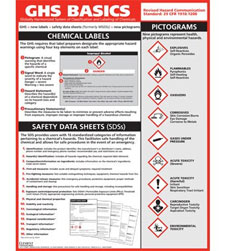| The Home page of ILPI's Safety Data Sheet (SDS) Resource, the leader in SDS information since 1995! | |
| The history and philosophy behind this resource. | |
| A curated collection of books and reference materials concerning Safety Data Sheets and closely related topics. | |
| Paste your plain text SDS into the SDS-Demystifier, and it will be converted into a hypertext-enriched document with links to detailed explanations of each key term. | |
| An extensive list of frequently asked questions about Safety Data Sheets including regulations, content, compliance, and more. | |
| A humorous take on Safety Data Sheet jargon. Fill in the blanks on our entry form to generate a personalized Unsafety Data Sheet to share with your coworkers. | |
| Since 1995, we've maintained this massive curated list of the best places to find Safety Data Sheets on the Internet. | |
| Way more than a glossary, this hypertext-enhanced resource covers hundreds of SDS-related terms and expert knowledge. Each entry includes both the SDS relevance and links to additional authoritative resources. | |
| Archived results of Safety Data Sheet related polls taken by some of our millions of site visitors | |
| You are here! The OSHA regulations behind SDS regulations, including the inspection guidelines and over 400 official interpretations letters under the Hazard Communication Standard | |
| Commercial suppliers of SDS authoring and management software as well as cloud compliance services. | |
| Commercial companies that will create SDS's for your specific needs as well as SDS translation companies. |

Safety signs, banners, and scoreboards? Get yours at Safety Emporium!
| Title: 11/01/1999 - HAZCOM: Clarification of "article" and "hazardous substance". | |
| Record Type: Interpretation | Standard Number: 1910.1200(c); 1910.1200(d)(4) |
OSHA requirements are set by statute, standards and regulations. Our interpretation letters explain these requirements and how they apply to particular circumstances, but they cannot create additional employer obligations. This letter constitutes OSHA's interpretation of the requirements discussed. Note that our enforcement guidance may be affected by changes to OSHA rules. Also, from time to time we update our guidance in response to new information. To keep apprised of such developments, you can consult OSHA's website at https://www.osha.gov
November 1, 1999
Ms. Michele Sabulsky
HSE Associate
EPI
813 Frederick Road
Baltimore, Maryland 21228
Dear Ms. Sabulsky:
Thank you for your letter of August 17, 1999 to the Occupational Safety and Health Administration (OSHA) regarding the carcinogenicity of silica and its classification on Material Safety Data Sheets (MSDSs) for gaskets. Your question has been referred to the Directorate of Compliance Programs for response.
OSHA does not make hazard determinations on a case-by-case basis, since it is the manufacturer who is most familiar with a productís composition, its intended uses, and the potential downstream exposures. We are not generally involved in the hazard determination process until it is brought to our attention that the manufacturer's MSDS may be incomplete or inadequate.
Your letter seems to ask whether or not the gaskets your company produces are an "article" under the Hazard Communication Standard (HCS). Articles do not present a hazardous exposure to employees and are exempt from coverage under the standard. Hopefully, the following guidance will be of assistance to you in making the determination of whether your product is an "article" or a "hazardous chemical."

Ensure your workers are trained with safety posters and more from Safety Emporium.
A hazardous chemical is any chemical which is a health hazard or a physical hazard. Crystalline silica is considered a Group 1 carcinogen by the International Agency for Research on Cancer (IARC). According to the HCS, any hazardous chemical determined to be a carcinogen by IARC, the National Toxicology Program (NTP), or regulated as a carcinogen by OSHA is considered a carcinogen for the purposes of the HCS and must be designated as such on the MSDS. Crystalline silica is clearly a hazardous chemical.
An "article" under the HCS is any manufactured item other than a fluid or particle which, 1) is formed to a specific shape or design during manufacture, 2) has end use function(s) dependent in whole or in part upon its shape or design during end use, and 3) which under normal conditions of use does not release more than very small quantities, e.g., minute or trace amounts of a hazardous chemical and does not pose a physical hazard or health risk to employees (29 CFR 1910.1200(c)).
Therefore, if at any time during employee handling of your product (for example, shipping, packaging, installation, or final use), the silica in your product is available for employee exposure (in quantities other than minute or trace amounts), then your product would not be considered an article and the potential health effects must be reported on the MSDS.
I hope that this provides the clarification you were seeking. If you require further assistance, please contact the Office of Health Compliance Assistance at 202-693-2190. Thank you for your interest in occupational safety and health.
Sincerely,
Richard E. Fairfax, Director
Directorate of Compliance Programs
The original official public domain version of this document is available from OSHA at https://www.osha.gov/laws-regs/standardinterpretations/1999-11-01-1.
